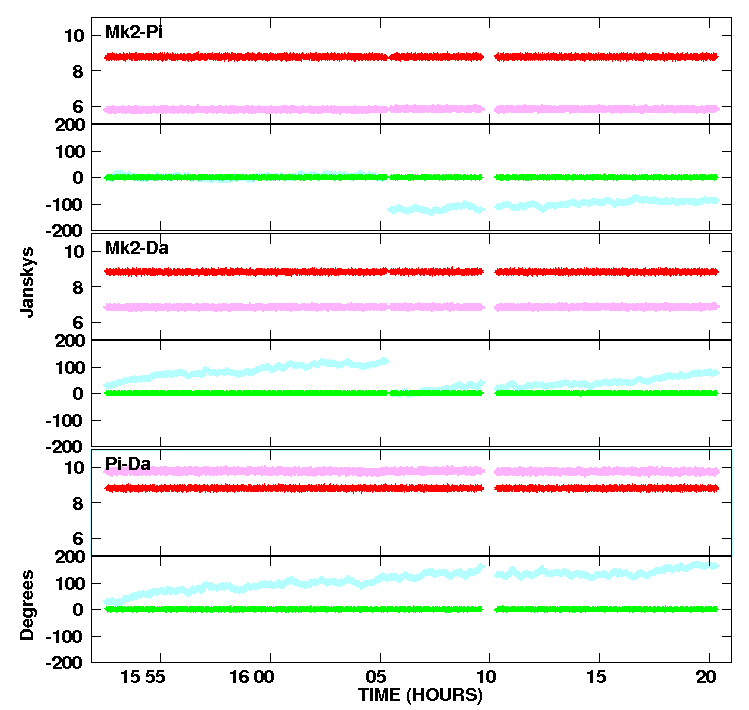Daily Image
08-01-2010e-MERLIN - Brotherly love!
| Submitter: | Michael Garrett |
| Description: | Following up on the "Sisterly Fringes" theme of the daily image of 17-12-2009, we report that the e-MERLIN group at Jodrell Bank (in some senses our "elder brother" in the field of radio interferometry) has produced first fringes from three e-MERLIN antennas - the Mk2, Pickmere, and Darnhall. In interferometry "three" is something of a "magic number" rather than being the proverbial "crowd". In particular, it permits the determination of the so-called "closure-phase", first discovered by Roger Jennison (MNRAS, 1957) at Jodrell Bank more than 50 years ago, and still a fundamental concept that forms the foundation of all interferometry calibration schemes used today (see e.g. Readhead & Wilkinson 1978), including those employed by the WSRT and LOFAR. With three telescopes, it turns out that the various antenna based phase errors cancel, after summing around a triangle of telescope baselines. Simple but true! So much for the past. Last weekend the e-MERLIN team observed a bright point source calibrator in a single IF containing 1024 frequency channels over a total bandwidth of 128 MHz at 6.1984 GHz. Test observations are already underway with a total bandwidth of 512 MHz, with the final system delivering a staggering 2 GHz of bandwidth per polarisation. Plots of the corrected amplitudes and phases (red and green) and the original observed data (pink and turquoise) on the three baselines between the Mk2, Pickmere, and Darnhall are shown above. Digital signals from a 4th antenna (Knockin) are expected to be correlated before the end of the month, permitting closure amplitudes to also be determined. In terms of raw sensitivity, the new e-MERLIN system will be 30 times better than the current system, reaching microJy r.m.s. noise levels in 12 hours. With sub-arcsecond resolution, the capabilities and complimentarity of e-MERLIN and LOFAR are eagerly awaited by the astronomical community. |
| Copyright: | ASTRON & U of Manchester |
| Tweet |  |
